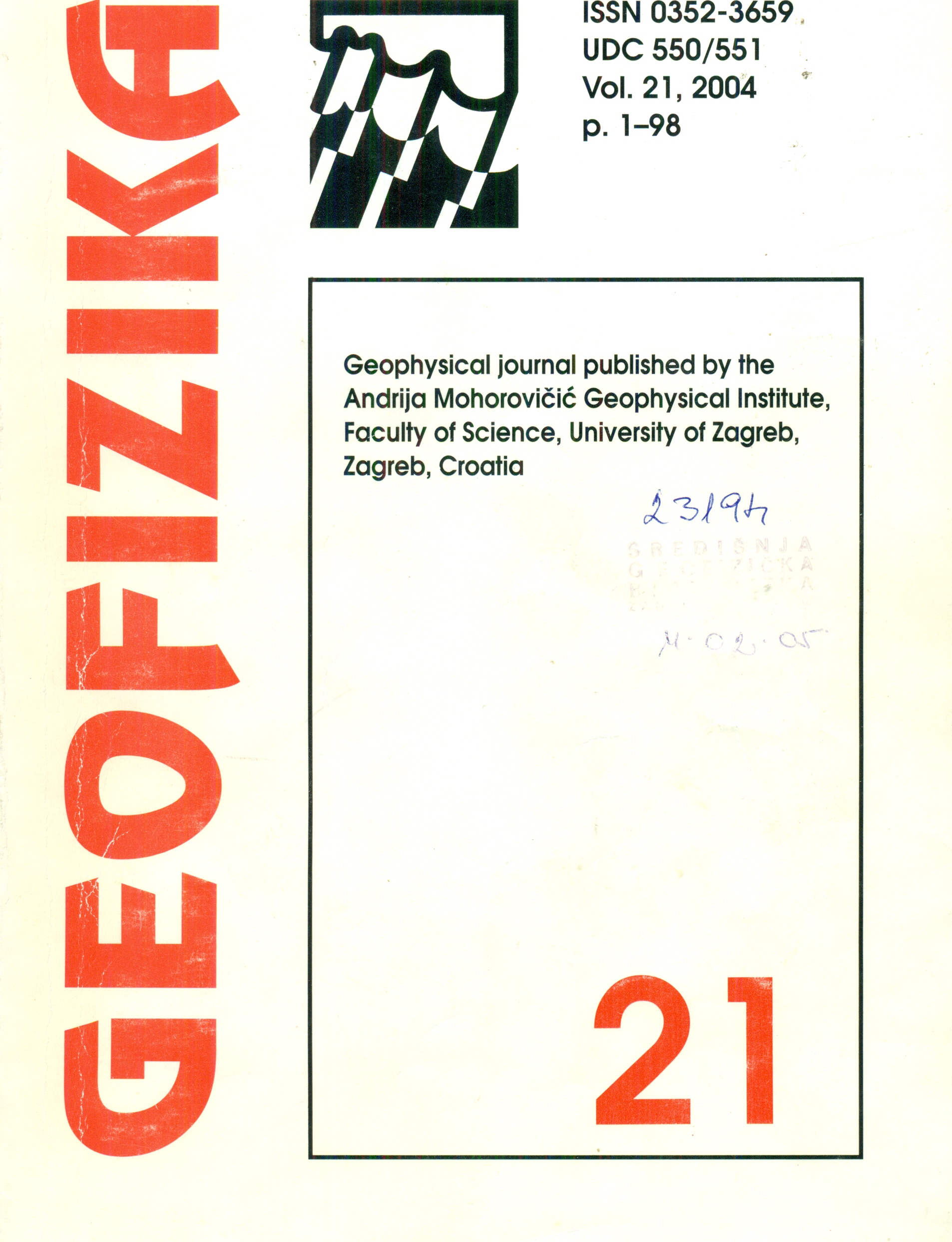Analysis of Zagreb climatological data series using empirically decomposed intrinsic mode functions
Keywords:
Empirical mode decomposition, intrinsic mode functions, climatological series, climatic fluctuations, ZagrebAbstract
The empirical mode decomposition method (EMD) (Huang, 1998) is applied to the series of annual and seasonal averages of temperature, cloudiness, air pressure and annual and seasonal sums of global radiation and precipitation, all observed in Zagreb-Grič in the period 1862–2002. The method itself decomposes the original series into so called intrinsic mode functions (IMF), each being characterized by its own, intrinsic time scale.
Sums of the low-frequency IMFs for the single element revealed present climatic fluctuations on the decade-to-century scale. It is confirmed that climatic fluctuations of every single element, particularly temperature and cloudiness, are the results of variations in the global atmospheric circulation above the whole Europe. Trend and long-term variations of Zagreb temperature fits to globally observed increase of temperature but also to variations of zonal circulation index. Exchange of Hadley’s zonal and Rossby’s wave regime of the general atmospheric circulation at the beginning of the 20th century is observed in the long-term variations of almost every element. Linear correlation coefficients between annual and seasonal long-term variations are calculated. It is shown that spring and winter variations mostly influenced annual fluctuations that are due to internal feed-back processes. Also, correlation coefficients for every pair of climatic element are calculated, enabling conclusions about interaction between elements on long-term scales.
Downloads
Published
Issue
Section
License
Copyright (c) 2021 Geofizika journal

This work is licensed under a Creative Commons Attribution-NonCommercial 4.0 International License.

